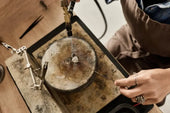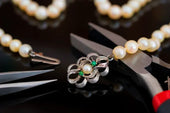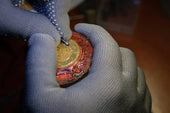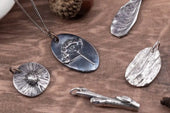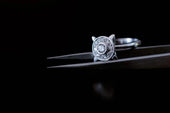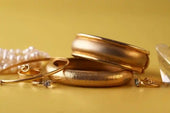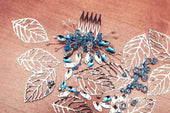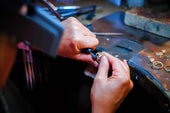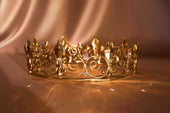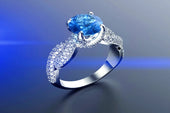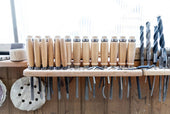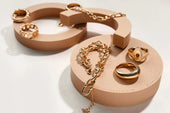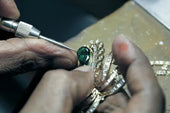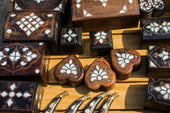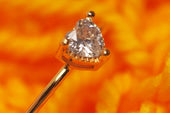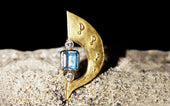When shopping for jewelry components or creating your own designs, you’ll often come across terms like solid gold, gold-filled, and gold-plated. At first glance, they might seem similar—they all have that beautiful golden shine, but the differences between them can significantly affect your jewelry’s durability, cost, and long-term appearance. In this guide, we’ll break down what each term really means and help you decide which type of gold is best suited for your next project.
What Is Solid Gold?
Solid gold refers to a metal that contains a high percentage of pure gold throughout its entire composition—not just on the surface. While pure gold is 24 karats (24k), it’s rarely used on its own in jewelry because it’s too soft for everyday wear. To improve its strength and durability, it's commonly alloyed with other metals like copper, silver, or zinc, resulting in more practical options such as 18k (75% gold), 14k (58.3% gold), or 10k (41.7% gold).
One of the biggest advantages of solid gold is its exceptional durability, especially in 14k and 18k forms. It can withstand decades of wear without tarnishing, fading, or flaking—making it ideal for fine jewelry, engagement rings, and heirloom pieces.
Solid gold is also hypoallergenic, particularly in higher karats, meaning it’s a safer choice for individuals with sensitive skin or metal allergies. Additionally, it holds intrinsic value; as a precious metal, solid gold can retain or even increase its worth over time.
What Is Gold-Filled?
Gold-filled (often abbreviated as GF) is a high-quality alternative to solid gold. It consists of a thick layer of real gold mechanically bonded to a base metal—usually brass or copper—using heat and pressure. By industry standards, the gold layer in gold-filled materials must make up at least 5% of the item's total weight, which makes it significantly more durable and valuable than gold-plated pieces. Unlike gold plating, the gold layer in gold-filled components is hundreds of times thicker and less likely to wear off over time.
Gold-filled jewelry offers the look and feel of solid gold at a fraction of the cost. It’s an ideal middle-ground option for jewelry makers who want durability, beauty, and a more budget-friendly material.
Because of the thicker gold layer, gold-filled findings are highly resistant to tarnishing and flaking, and they can last for many years with proper care. Many people also find gold-filled components to be safe for sensitive skin, making them a solid option for earrings, chains, and bracelets that come into frequent contact with the skin.
What Is Gold-Plated?
Gold-plated jewelry consists of a very thin layer of real gold that is applied to the surface of a base metal—typically brass, copper, or stainless steel—using an electroplating process. Unlike gold-filled, which uses mechanical bonding and a much thicker layer of gold, gold plating usually contains less than 0.05% actual gold by weight.
Because the gold layer is so thin, it’s primarily decorative and not designed for long-term durability. Gold-plated components are popular for their affordable price and attractive appearance. They allow jewelry designers and makers to create trendy, gold-colored pieces without a major investment.
The biggest drawback of gold-plated jewelry is its low durability. The thin gold layer can quickly wear off, especially with frequent contact with skin, water, sweat, or chemicals like perfumes and lotions. Once the base metal is exposed, it may tarnish or cause skin irritation.
Solid Gold vs Gold-Filled vs Gold-Plated
Here’s a side-by-side comparison of solid gold, gold-filled, and gold-plated materials to help you quickly see how they differ in key areas:
|
Feature |
Solid Gold |
Gold-Filled |
Gold-Plated |
|
Gold Content |
41.7%–99.9% (10k–24k) |
~5% by weight |
<0.05% by weight |
|
Durability |
Extremely high |
High |
Low |
|
Tarnish Resistance |
Excellent |
Very Good |
Poor |
|
Skin Safety |
Hypoallergenic (esp. 18k+) |
Generally safe |
May cause irritation |
|
Cost |
High |
Medium |
Low |
|
Lifespan |
Lifetime+ |
5–30 years (with care) |
Months to 1–2 years |
|
Common Uses |
Fine jewelry, heirlooms |
Daily wear, mid-range jewelry |
Fashion jewelry, trend items
|
Gold FAQs
Can You Cut Gold-Filled Creations?
Yes, you can cut gold-filled pieces using proper jewelry tools. Just keep in mind that cutting will expose the base metal underneath the gold layer, so you might need to file and polish the edges for a clean finish.
How can I care for gold-filled jewelry?
Clean gold-filled pieces gently with mild soap and water, avoid harsh chemicals, and store them separately to prevent scratches.
Is gold-filled jewelry hypoallergenic?
Yes, gold-filled jewelry is generally safe for sensitive skin because it has a thick layer of real gold, which reduces the risk of allergic reactions.
Conclusion
Understanding the differences between solid gold, gold-filled, and gold-plated materials is essential for making informed choices in jewelry design and purchasing. Each has its own advantages depending on your budget, style, and how long you want your pieces to last. In short, Not all gold is created equal!


